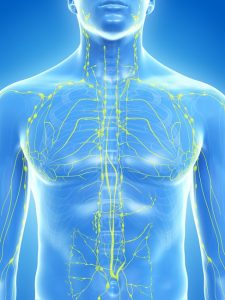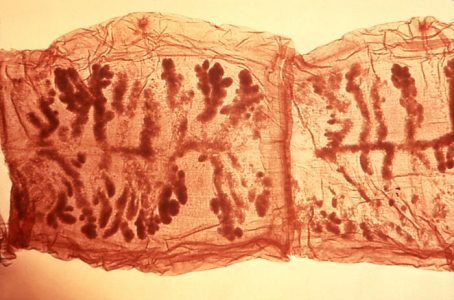Lymph Definition
Lymph is the fluid which travels throughout the lymphatic system in animals. It is different from blood, in that it comes from the extracellular fluids surrounding cells. The fluid around all the cells in the body is collected in lymph ducts, or small vessels which transport the lymph around. The lymph has a number of different components, which varies by species.
In general, lymph is a multi-component fluid which fills the lymph ducts, and allows a number of cells to move throughout the body. Different organisms have evolved various uses for the lymph, such as oxygenation of the cells and immunity. In most organisms the lymph serves one or both of these purposes. Many small organisms do not have a well-defined lymph system. While they still have many of the components of lymph, the interstitial fluid is usually not called lymph unless it travels in ducts throughout the body. In these cases, it is referred to simply as extracellular fluid.
Components of Lymph
Interstitial Fluid
The major component of lymph is the fluid which resides between cells. This fluid is used by the cells to transfer substances, excrete certain substances, and allows white blood cells access to the interstitial spaces between cells to fight bacteria. This lymph fluid is composed mainly of water, with many other substances present. There are also ions and organic molecules, as well as proteins and substances produced and excreted by the cells. While this fluid may vary in exact composition between different species, it is regulated and produced in the same way. Multicellular life needs a substance between cells to pass molecules and exchange ions, and this process produces and maintains the main component of lymph.
Lymphocytes
Lymphocytes are cells which survive in the lymph and perform various functions for the body. Lymphocytes are a subclass of white blood cells, which travel the body looking for invading bacteria and other toxic substances. The lymphocytes are named because they travel mainly within the lymph, using the ducts as a means to reach various parts of the body. The lymphocytes include natural killer cells, T cells, and B cells. These cells serve a variety of functions in recognizing and attacking pathogens, and the lymph is a major component of the immune response in most animals.
Examples of Lymph
In Humans and Larger Animals
Many large animals like humans rely on lymph to serve a number of purposes. Below is a diagram of the lymphatic system, a series of lymph ducts and lymph nodes in the human body. The lymph ducts allow the lymph to be connected throughout the body, while the nodes store and create white blood cells and other components of the lymph. From these nodes, the immune cells can travel through the lymph to any point in the body to respond to an infection.
In humans, lymph does not play a significant role in oxygenating cells. While some lymph is created when blood plasma escapes the blood vessels, it is usually not directly involved in carrying oxygen as it lacks red blood cells. The lymphatic system is mainly used as a sort of “highway” for immune cells and other substances which cannot be transported in the blood. This is accomplished mainly through the blood and circulatory system. However, not all organisms have a circulatory system.
In Small Invertebrates
In small invertebrates such as flukes, tapeworms, and other worm-like creatures, lymph and the lymph ducts can be a means for oxygenating the tissues. In these animals, blood is not necessary, nor is a circulatory system. Muscle movements around the lymph ducts pump the lymph through the system. As it nears the surface of the skin, it becomes oxygenated as oxygen diffuses through the thin epithelial (skin) layer. As the organism moves, the lymph is pushed around the lymph ducts and reaches internal areas which receive less oxygen. Here, the oxygen can diffuse out of the lymph and into the cells.
The image above shows the internal anatomy of a tapeworm, view under a light microscope. A die has been used to show the lymph ducts within the tapeworm, which look like a branched pattern throughout. Through these ducts the lymph can move, carrying various substances and lymphocytes to different areas of the tapeworm’s body.
Quiz
References
- Brusca, R. C., & Brusca, G. J. (2003). Invertebrates. Sunderland, MA: Sinauer Associates, Inc.
- Pough, F. H., Janis, C. M., & Heiser, J. B. (2009). Vertebrate Life. Boston: Pearson Benjamin Cummings.
- Widmaier, E. P., Raff, H., & Strang, K. T. (2008). Vander’s Human Physiology: The Mechanisms of Body Function (11th ed.). Boston: McGraw-Hill Higher Education.


